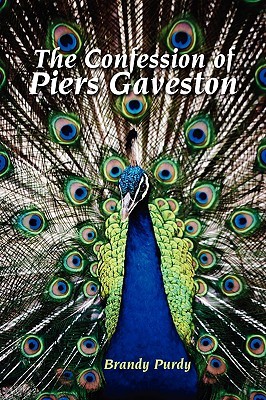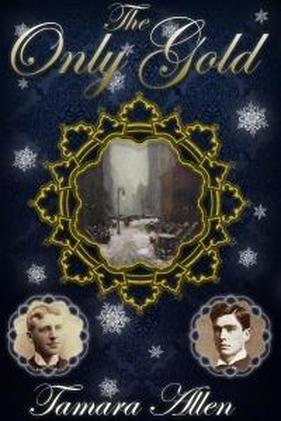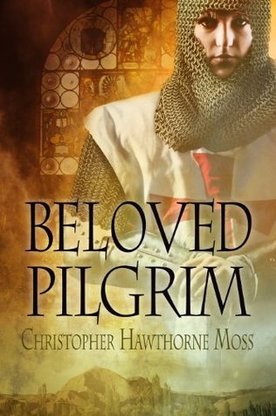How can we recover the lives of gay, lesbian, bisexual, and transgender people in history? We know of a few prominent figures, from Alexander the Great and Sappho to Oscar Wilde and Gertrude Stein, but for the most part the only thing we know about GLBTQ individuals is arrest records and diatribes by religious writers, an erasure only matched by women, aboriginal peoples, racial minorities, the very poor, and people with disabilities. But all is not lost. The oft unsung historical novelist has the power to recreate plausible, passionate, and positive stories of what life may have been like for men who love men, women who love women, and men and women who are identified as the other. There are several authors who have inspired me with the sensitivity of their efforts to give readers a peek into what loves and lives may have been for those for whom “love (is) that dare not speak its name.” As historical research persists and old notions of propriety are reconsidered, more and more historical fiction appears to be dead-on accurate.

It was when I started sampling GLBTQ historical fiction that I discovered what precisely inspired my own flights of plausible fancy. One of the first I read was Brandy Emily Purdy’s CONFESSION OF PIERS GAVESTON, about the infamous lover of King Edward II of England and his tragic death. Gaveston is a historical figure who communicated his homosexual love to no less a figure than playwright Christopher Marlowe who shared his tastes, and only the most negative of historians can ignore all the clues and make him straight. That seems to be the pattern with such figures, where the assumptions about the individuals have to stretch far beyond rational interpretation to make them straight.
But Gaveston is a noble, a historical figure who is almost obvious in his place in history. As I read GLBTQ historical fiction I found more everyday characters who loved their own sex. Most notable are all the Age of Sail novels by such authors as M Kei, Alex Beecroft, and Elin Gregory, who took the combination of all-male environments and the likely attraction of such to gay men and made romances of their loves. A similar setting provided Charlie Cochrane with a place for her own two lovers, Jonty Stewart and Orlando Coppersmith, to find each other at a boys’ college, creating the Cambridge Fellows series that is dear to the heart of many. Cochrane’s heroes are very real, very credible, and provide both the conflict for a good story and the characteristics for a plausible love story that creeps into the painful as the years go by and the two young men must part, heartbreakingly, during World War I, a fate shared by other men but so much more poignant for those who could not speak of their loss.

Finally as an old English major I enjoy scholarship concerning literature and was delighted to discover Norman Jones’s work GAY AND LESBIAN HISTORICAL FICTION: SEXUAL MYSTERY AND POST-SECULAR NARRATIVE, which examines the inclusion of structures and images in GLBTQ historical fiction that show up in more mainstream literature, such as self-identification, coming out stories, looking for a role model, and finding community. Jones discusses these themes in William Faulkner’s ABSALOM, ABSALOM, Mary Renault’s Alexander novels, Mark Merlis’s AN ARROW’S FLIGHT, and other GLBTQ novels. Realizing the heritage of GLBTQ literature made me aware of my place in a long and growing tradition.
Who knows what it is about historical novels that so satisfies its fans. Perhaps it is the isolation and desperation so charmingly fulfilled in other times, or perhaps it is the comfort of knowing we have, in fact, always been here and always been queer but found a way to make our lives and loves work. The longer our attention to the past continues, we discover just how prophetic historical novelists have been when one after another story of same-sex-desiring and gender-variant historical figures come to life. It is special to be part of this movement and find over and over that we are writing stories that prove to be true.
More recently I have taken on the challenge of listing all the ways gay and transgender people managed to create lives and find love and togetherness which I am calling “How and Why They Managed” and have included these on the blog. They run the gamut from isolation and loneliness, to surreptitious to blatantly open, in those times or communities where condemnation was or is not present, such as in American Indian or Ancient Greek societies among others. As much as ill-informed historians and historical novelists may protest the very existence of “gay people” in earlier times, the truth is that there are many places and times where same sex desire was not condemned or individuals in society who could find enclaves of acceptance. The all-or-nothing notions of these people mean more to those of us who are GLBTQ than simple oversight. They deny us our very existence and the tales that will provide us with a sense of belonging and our place in time.

Recent biological studies, carried out by those such as Dr. Joshua D. Safer, MD1, have demonstrated causal factors that prove that GLBTQ people are truly “born that way”, suggesting that no new environmental factors can be found to account for “unnatural” inclinations, that gay and transgender people have always been part of the human animal and not “unnatural” at all. This points to the fact that we do have history, that no amount of denial on the part of scholars, religious people, or others can change this fact. It is therefore incumbent on the part of historians and sociologists and, barring that, those storytellers so inclined to add us back to the Story of Mankind. Odds are that we found ways to be happy and fulfilled, and why not write stories that reflect this truth?
Come read Our Story GLBTQ Historical Fiction and discover the hundreds of authors who want to make these stories happen.
1 Safer, Joshua D., and Tangpricha, Vin, “Out Of The Shadows: It Is Time To Mainstream Treatment For Transgender Patients”, Endocrine practice : official journal of the American College of Endocrinology and the American Association of Clinical Endocrinologists 14.2 (March 2008): 248–250, doi: 10.4158/EP.14.2.248
About Christopher:
Christopher Hawthorne Moss is the author of BELOVED PILGRIM, WHERE MY LOVE LIES DREAMING, “Le Beau Soleil”, “Truck Stop”, and other historical fiction. You can find Christopher Hawthorne Moss’s own historical novels and stories, such as the transgender Crusader knight in BELOVED PILGRIM, the adventurous army lieutenant who accompanies General Scott during the Mexican War of 1846-48, and the two lovers from different worlds who go through the same Civil War trauma only to find each other again in WHERE MY LOVE LIES DREAMING at his web site at http://authorchristophermoss.blogspot.com
 RSS Feed
RSS Feed